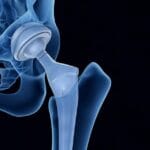Summary:
Lifting weights is a key component of many fitness routines, offering significant benefits in terms of strength, endurance, and muscle growth. However, improper weightlifting techniques can lead to severe arm injuries, from minor strains to debilitating conditions requiring medical intervention. Understanding how to lift weights safely is crucial for preventing these injuries and ensuring a sustainable and effective workout regimen.
The Importance of Proper Technique
Correct form and posture are essential for safe weightlifting. These elements ensure that the targeted muscle groups are engaged while minimizing stress on joints and connective tissues. Key aspects include maintaining a neutral spine, engaging the core, and executing movements with controlled precision. Ignoring these principles can result in injuries such as ligament sprains, muscle strains, tendonitis, and more serious issues like hyperextension of the elbow or rotator cuff injuries.
Preparing to Lift Weights
Warm-Up Properly:
Adequate preparation before lifting weights is vital for injury prevention. Start with dynamic stretches and light cardiovascular activities to prepare the muscles, tendons, and joints for the physical demands of weightlifting. Gradual progression in weight and intensity is especially important for beginners to condition the muscles and joints and avoid premature overloading.
Use Proper Form and Technique:
Maintaining proper form and technique is essential to avoid injuries. This involves keeping correct posture, engaging the core muscles, and using controlled, smooth motions throughout each exercise. If unsure about your form, consider working with a qualified personal trainer or fitness professional.
Start Light and Progress Gradually:
Avoid the temptation to lift weights beyond your current capabilities. Begin with lighter weights and gradually increase the load as your strength and proficiency improve. This gradual progression helps to condition your muscles and joints, reducing the risk of injury.
Recognizing High-Risk Exercises
Certain weightlifting exercises, such as bench presses, deadlifts, and overhead presses, inherently carry higher risks of arm injuries. These exercises require precise techniques and often benefit from professional guidance or the use of safety equipment. Recognizing warning signs and symptoms of arm injuries, such as sudden sharp pain, swelling, or decreased range of motion, is crucial for timely intervention and preventing long-term damage.
Key Lifting Techniques
Posture:
Maintaining good posture is fundamental when lifting weights. Look straight ahead, keep your back straight, chest out, and shoulders back. This posture ensures spinal alignment and reduces the risk of back pain.
Lifting:
When lifting, slowly straighten your hips and knees rather than your back. Avoid twisting your body or bending forward. Hold the object close to your body to reduce strain.
Setting Down:
Setting down a heavy object is just as critical as picking it up. Reverse the lifting process by keeping the load close to your body and your back straight or slightly arched. Squat down, bending only at the knees and hips, and tighten your stomach muscles as you lower yourself.
Grip:
Your grip on the weight is another key factor. Hold the bar tightly and ensure that your wrist remains straight to provide optimal force. Avoid exaggerated grips and ensure that your thumb wraps around the bar to prevent accidental slips and injuries.
Elbow Position:
Your elbow position should correspond to your grip width and your lifting goals. A wider grip typically leads to elbows pointing out, which is effective for growing chest muscles. Conversely, a closer grip with elbows near your sides is better for training the triceps.
Advanced Tips
Progressive Overload:
To continue building strength and muscle as you advance in your weightlifting journey, gradually increase the physical stress on your muscles. This can be achieved by adding sets and reps, reducing rest time, improving form, or lifting heavier weights.
Choosing the Right Starting Weight:
Selecting the appropriate starting weight is crucial for avoiding injuries and ensuring steady progress. For beginners, it’s essential to start with a manageable weight that allows for the correct form and gradually increase the load as strength and technique improve.
Utilizing a Spotter:
Employing a spotter, especially during compound exercises like the bench press, is highly recommended. A spotter provides security, motivation, and assistance in achieving proper setup before lifting.
Common Mistakes to Avoid
Using Excessive Weight:
One of the most frequent errors is using weights that are too heavy. This compromises your form and increases the risk of elbow joint and shoulder injuries. Start with lighter weights to ensure proper form and execution.
Incorrect Starting Position:
A proper starting position is crucial for every exercise. For example, when doing bicep curls, stand with your feet shoulder-width apart, hold the dumbbells at your sides with a firm grip, and keep your elbows close to your torso.
Lifting Without a Spotter:
Lifting heavy weights without a spotter can be perilous. A good spotter provides both security and motivation, especially during challenging lifts.
Preventative Measures
Rest and Recovery:
Incorporate rest days into your training schedule to allow muscles and connective tissues to repair themselves. Active recovery techniques like foam rolling or light stretching can also enhance circulation and alleviate muscle tension.
Hydration:
Stay hydrated to prevent muscle tension and cramps that could lead to injury. Drink plenty of water before, during, and after your workout.
Variation in Routine:
Monotonous training routines can contribute to overuse injuries. Incorporate a variety of exercises targeting different muscle groups to promote overall strength development and minimize overload on any particular area.
Recognizing Warning Signs of Arm Injuries
Arm pain can have various causes and presentations, from mild discomfort to severe, debilitating pain. Recognizing warning signs, such as sharp pain, swelling, or reduced range of motion, is crucial for preventing serious complications and ensuring timely and effective treatment for arm injuries.





